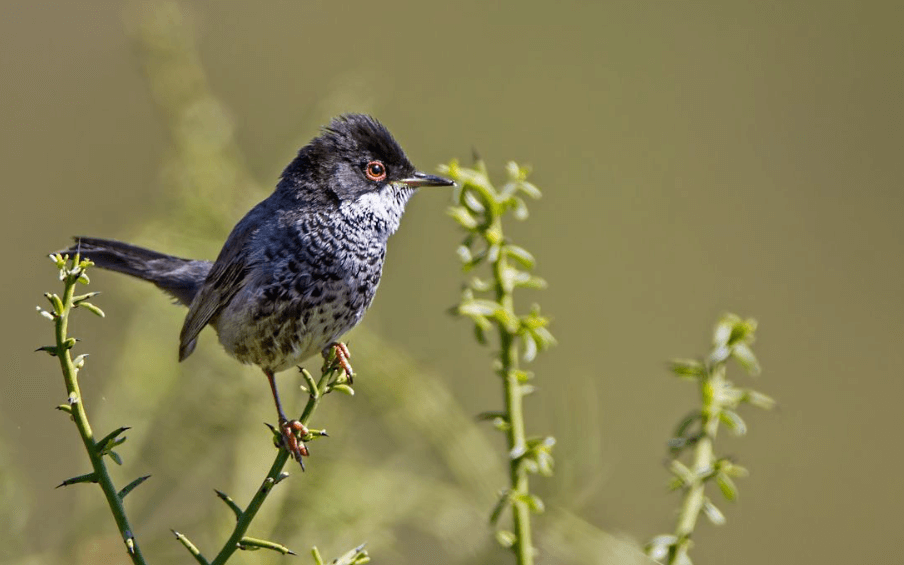Do you know about Cyprus National Bird? Cyprus is known for its picturesque beaches, beautiful landscapes, and fascinating history. However, not many people are aware that Cyprus is also home to the Cyprus Warbler, the national bird of the island. In this article, we will delve into the details of the Cyprus Warbler, its significance, habitat, and behavior.
Cyprus Warbler, or Sylvia melanothorax, is a small songbird species that belongs to the family of Old World warblers. The bird is exclusively found in Cyprus and nowhere else in the world. It was first identified by the British ornithologist Edward Hargitt in 1890. In 2002, the Cyprus Warbler was officially declared as the national bird of Cyprus.
Cyprus National Bird: Appearance and Identification
The Cyprus Warbler has a distinctive appearance that helps in its identification. The male birds have a greyish-black head, throat, and upperparts, while the underparts are white. The wings are brownish-black with a white patch on the edge, and the tail is long and black. The female birds, on the other hand, have a brownish-grey head and upperparts, with a lighter grey color on the underparts. The wings and tail are similar to those of the male bird.
Habitat and Distribution
The Cyprus Warbler is a resident bird of Cyprus and is found in most parts of the island, except for the highest mountain peaks. The bird inhabits open scrubland, maquis, and woodland areas with a dense undergrowth. The population of the bird is estimated to be around 10,000 to 25,000 pairs, with a declining trend due to habitat loss and fragmentation.
Cyprus National Bird: Behavior and Diet
The Cyprus Warbler is a non-migratory bird, and the breeding season starts in April and lasts until August. During this time, the male bird is known for its distinctive song that can be heard from a distance. The male birds defend their territory and court the female birds with their songs. The female bird builds the nest, which is usually located in the dense undergrowth or the lower branches of trees. The nest is made of twigs, leaves, and grass.
The Cyprus Warbler feeds on insects, spiders, and other small invertebrates, which it finds in the undergrowth or on the ground. The bird forages by hopping on the ground or among the low branches of trees.
Significance and Conservation of Cyprus National Bird
The Cyprus Warbler is an important bird species for Cyprus as it represents the country's unique biodiversity. The bird is also an indicator of the health of the island's natural ecosystems. Due to habitat loss and fragmentation, the population of the Cyprus Warbler has been declining. The bird is listed as a "Vulnerable" species by the International Union for Conservation of Nature (IUCN) and is protected under the European Union's Birds Directive.
Conclusion
The Cyprus Warbler is a unique and significant bird species that is found only in Cyprus. The bird's distinctive appearance, behavior, and habitat make it a fascinating subject for birdwatchers and nature enthusiasts. However, the declining population of the bird due to habitat loss and fragmentation is a cause for concern. It is important to conserve the natural habitats of the bird and promote sustainable development practices to ensure the survival of this national treasure of Cyprus.
FAQs
- What is the habitat of the Cyprus Warbler?
The Cyprus Warbler inhabits open scrubland, maquis, and woodland areas with a dense undergrowth.
- What is the significance of the Cyprus Warbler?
The Cyprus Warbler is the national bird of Cyprus and represents the country's unique biodiversity. It is also an indicator of the health of the island's natural ecosystems.
- Is the Cyprus Warbler migratory?
No, the Cyprus Warbler is a non-migratory bird.
- What is the population of the Cyprus Warbler?
The population of the Cyprus Warbler is estimated to be around 10,000 to 25,000 pairs.
- Why is the population of the Cyprus Warbler declining?
The population of the Cyprus Warbler is declining due to habitat loss and fragmentation caused by human activities such as urbanization, agriculture, and tourism.
